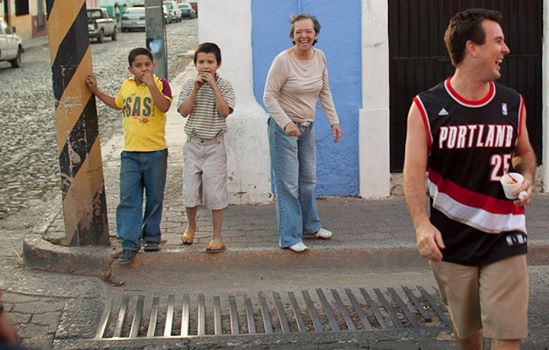
Clayton Szczech has been guiding tours through the world of tequila since 2008 and expanded into mezcal tours in 2012. We’ve been talking a lot lately as he charts a course through many of the agave growing regions of Mexico. If you think Mezcalistas spends a lot of time on mezcal, Clayton is absolutely obsessed and spends almost all his time in the field talking to mezcaleros, growers, and tons of other people connected to the industry. As he told me: “I made the decision that this was going to be my profession, and it really is. This is all I do.”
When not in the field he’s been attending NORMA meetings and is a general man about the the world of agave distillates. He and Erick Rodriguez are two of the key guides and activists in the world of agave distillates so pay close attention to what they’re saying!
Clayton and I chatted in person and via Facebook over the past three months, this interview is edited together from those conversations. He has tours coming up in Jalisco and Oaxaca this spring. You can always find out about his latest tours at Experience Mezcal and Experience Tequila but he has some gems coming up including a Mezcal Boot Camp that will take you up into the Sierra Norte to visit Tosba this April 23-25 and one around Oaxaca immediately afterwards.
How did you get into the guiding business?
I’ve been doing tequila tours, education, events and research as a business since December 2008. It’s called Experience Tequila. But I’ve been traveling intermittently in Mexico since 1995, lived in the state of Veracruz in 2005-2006, and have lived in Mexico City for the past couple of years. I speak fluent Spanish and navigate the culture well. I couldn’t do any of this without the knowledge and generosity of all the maestros – producers and otherwise, in both tequila and mezcal- who have shared with me over the years.
How did you get into mezcal?
Mezcal was always there, in some way, but I didn’t really start to think about it much until my first trip to Oaxaca in about 2010
Did you have a conversion moment from tequila to mezcal?
No, not really. It doesn’t make for a very good story, but to me all of this stuff is part and parcel of Mexican culture. I’ve been a wannabe Mexican since high school, and my real conversion moment was on that first backpacking trip in summer of 1995, right out of high school.
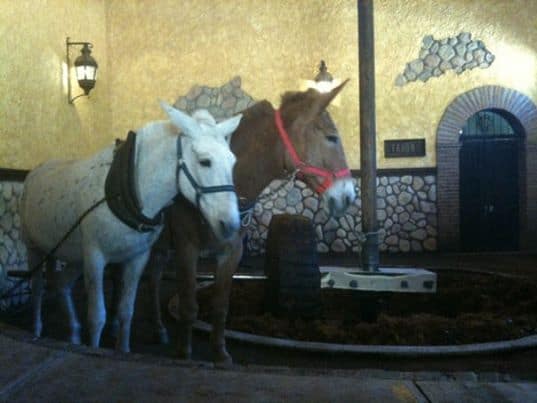
I’ve had something closer to a moment like you might be thinking of after Oaxaca – getting more into Guerrero in particular.
I started to realize how much there is out there in addition to the vastness of Jalisco and Oaxaca, and how even this boom we’re experiencing in the US is only showing folks the tip of the iceberg in terms of the diversity in regions, flavors, traditions, etc.
You got into Mexico, tequila and mezcal through a love of the culture. How do you bring that out in your tours?
I like the term “specialist,” because it doesn’t presume expertise but it clearly states that I don’t do anything else. It’s a combination of luxury, privilege, and sacrifice that I can spend this kind of time out in the field, learning. So when I do a tasting or a tour, I try to bring a holistic approach – who made this, what are they like, what is special about the process, etc. Where does that fit in with what we think we know about history, etc.
What’s distinctive about what you do?
I call my trips “group tours for people who don’t do group tours.” While typical tour experiences are built around separation from locals and packaged as authenticity, I actually insert people (safely, of course) into places that they would never get to on their own.
It always feels very natural to me, but when other people see me do it, they remark that it very much seems methodically organized. I definitely know that I have a set of things I want to learn from maestros, and that it works a lot better if I approach it as an anthropologist – taking nothing for granted, asking very basic questions in an inductive way, truly listening to what they say and not trying to cram it into my frames of reference.
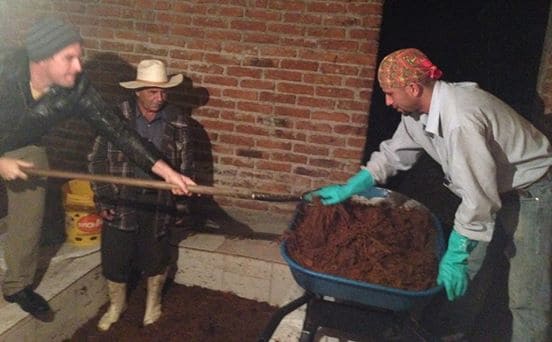
Photo courtesy of Joel Contreras.
Tours are necessarily an artificial experience. But there’s a real positive to that too. It means that I can curate them and create an experience in four days that is way denser than what would just accidentally happen in the same period of time if one were just travelling without a guide.
I chose the word “Experience” for my business very deliberately. I think someone who doesn’t drink much, is reluctantly along with a partner, or even truly doesn’t like mezcal can have a really great experience on these tours, because I’m setting them up to take in culture, broadly speaking – people, relationships, places, food, religion, music and the deep folk knowledge behind mezcal. To come to an understanding that mezcal is a reflection of all these things, and it is reflected in them, like a prism.
What do you notice most when you’re out in the field?
I’m sort of a word nerd so I pay attention to regional differences in vocabulary.
Can you give me an example?
Well to keep it very simple and because I don’t want to give too much away, what is the place where mezcal is made called?
In Oaxaca you’d call it a “palenque”
Folks have such a Oaxaca-centric take on mezcal, that people say “palenque” often without realizing how exclusively Oaxacan that is.
Right
In Michoacan and Jalisco a place where mezcal is made is a taverna or a vinata. In parts of Chihuahua and Sonora, they say vinatería. In Guerrero, it seems pretty universally to be “fábrica,” (“factory”) which is literally true and also pretty hilarious, to an outsider.
And I’m constantly recording this type of variation for parts of the process, qualities of mezcal, obviously different magueyes, but also their characteristics and how they are harvested.
How do people talk about making cuts? What do they call the fermented juice? What do they call the first distillate?
It’s nerdy as hell and one of the things I get most excited about.
So, my idea with tours is that they are meticulously curated in terms of maximizing quality exposure and immersion in a short period of time. But, of course, it’s Mexico and it’s mezcal – so the “wonderful shit happens” factor is also accounted for. There are always pleasant surprises and there’s a certain amount of openness to improvisation.
I can get people into the local nitty gritty, but I know where the hospitals are, I’m insured, I’ve stayed and eaten many times in all the hotels and eateries we use. here’s always a plan B and C.

My tours are extremely fun and educational, but they’re not particularly relaxing. We start early and we see a lot. Two full days are basically spent in the palenques and the fields
I change things up depending on production schedules. On the tour this April we’re definitely going to see the “tipo palenque” process typical of Matatlán, and the Minas clay-pot process.
We’ll do pulque one of the days – generally going out with the tlachiquero while he extracts aguamiel.
We do a curated tasting each night – one with Mezcaloteca, one at In Situ. They both have a lot to offer and I really like people to get the gamut of perspectives that are out there – from both producers and tasting / expert types
And there’s actually a bit of free time each evening so people can do their own thing in Oaxaca City.
And I HIGHLY recommend folks stay an extra day to tour Monte Albán.
You do an amazing amount of travel so I’m curious how much background research you do before a trip like the one you took through Sonora to taste Bacanora this fall?
Ok. So I did a six day trip, guided by a local guy who’s extremely connected. Sonora is huge and I wanted to see a couple different regions so there was a LOT of driving. I met one to two producers per day, came back with about eight different Bacanoras. It’s a very, very different culture than anything I know -mezcal or otherwise. The north of Mexico is like a different country to me. The processes are quite similar to traditional and artisanal mezcal in other regions, but for example, all the mezcaleros are cattle ranchers. They wear spurs!
It was the time of year when they’re rounding up calves to be sold and shipped to Texas, so no one was actively producing. But I spent the better part of each day “conviviendo” – just hanging out while they do what they do – ranch work, making cheese and machaca, eating what they eat, and drinking a fair amount of bacanora.
They have maybe the severest maguey shortage in the country – I could be wrong, but it certainly seemed that way to me. This spring we’ll be doing fundraising to get a school bus for the schoolkids in Bacanora. They currently ride to school in police cars!
Is that related to the recent drought in Western states, over harvesting or something else?
Failure to reforest and a historic freeze a few years ago have the hills almost depopulated of maguey. I met with two producers who are raising seedlings on a mass scale, and it’s cool to see someone taking the initiative. One of these guys has gravity-fed irrigation coming from a spring that’s watering his recently planted seedlings. Of course, they have to keep the cattle away from the maguey for the first year or two, or they’ll eat it!
Are they all estate production operations and are they bottling under their own brand or selling the juice to someone else?
There are still very few brands. It’s been legal for so little time. And, my impression was that there’s pretty strong local demand for the juice. I know there are several parties currently actively looking to bottle and commercialize bacanora for the US market.
Where else have you been lately and what are you planning for the future?
I just got back from a short trip to the raicilla region around Cabo Corrientes. That was really great and it’s incredible how such old-school methods thrive so close to a place like Puerto Vallarta.
I’ve been spending a lot of time as always in Jalisco and Oaxaca, and am working on mezcal and tequila tours for Tales of the Cocktail and a really exciting “Mezcal Boot Camp” in the spring. I’m slowly learning about sotol from a producer in Chihuahua. I need to start planning for my summer events season in the US.
I’m trying to keep up my normal schedule of tours and research schedule, catch up on reading of mostly reference and technical books and get years worth of notes in some semblance of order, because I’d like to write more. What I should be doing is looking for an assistant!
Any thoughts on the recent emergence of Raicilla from Jalisco and what that means for the world of tequila?
I think the quality and early success of La Venenosa is fantastic for raicilla. Esteban Morales has been working with those producers for years and it’s great to see how receptive people are to the spirits.
I don’t know how much raicilla will affect tequila, but mezcal as a whole, certified and otherwise, DO – and not, certainly has the industry’s attention. It will be more important than ever to educate consumers on who’s who, and seek out quality and just practices for producers – whether in mezcal, tequila, sotol or some as yet unknown Mexican spirit.
You’ve attended some of the key meetings about the new NORMA proposal. It sounds like it was really energizing. How did it go?
Well, the proposed changes are definitely a step forward, and almost everyone agrees on that, even if they have strong critiques. What’s been inspiring, especially at the last big meeting in Oaxaca City, is seeing so many producers from different regions making the sacrifices to come together and make their voices heard. They’re not intimidated and they’re representing their own interests, which sounds like no big deal to a North American. But in Mexico it’s a sea change. Mexico is waking up in important ways, I think, and mezcal, of course, is a reflection of that cultural change as well.
What are you hearing out in the field about the NORMA proposals?
Very little. People are too busy working! I think everyone is taking a “wait and see” attitude for now.
Are there any new trends in the mezcal world?
I’m probably the wrong guy to ask. I’d like to think more producers are dealing directly with the consumer and getting a bigger piece of the pie, but I don’t know if that’s the case.

Unfortunately it can’t be called a trend yet, but I think Sanzekan Timeni’s “Mezcal Solidarity Bond” program could be looked at as a model for lots of small producers and consumers who want to do the right thing. We all want great, artisanal and traditional mezcal to be sustainable and beneficial to the people who have kept it alive. The Solidarity Bonds are a way for us to invest in mezcal’s future. I hope more producers and regions can come up with ways like that for us consumers to invest in the future of mezcal.

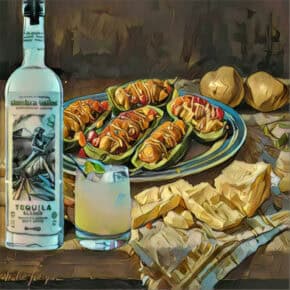
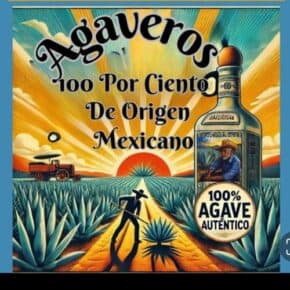









[…] Click here to read the original article in its entirety. […]